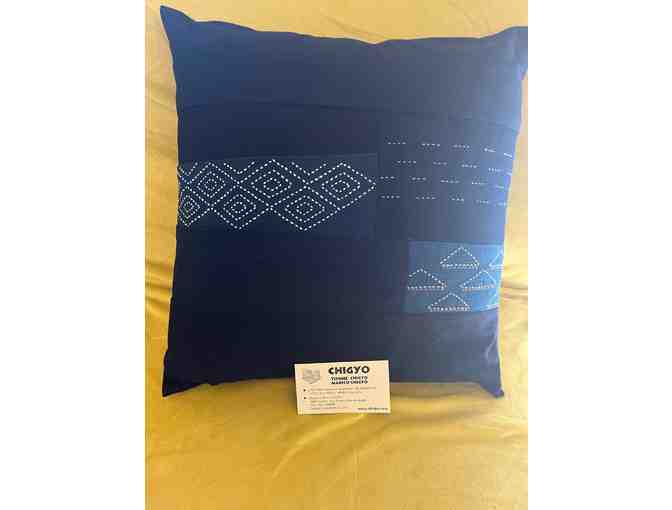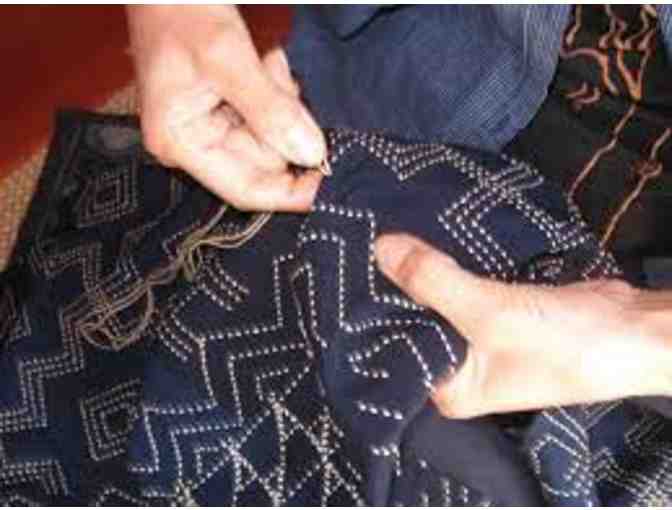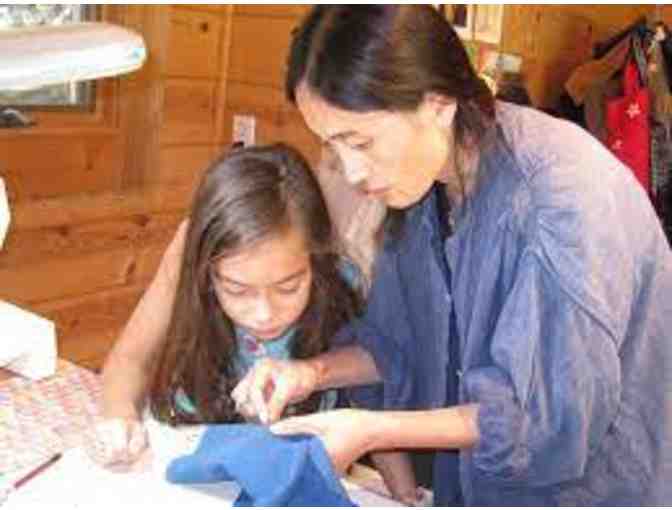Home
Authentic Sashiko Pillow Made by local Artist Marico Chigyo 13" x 13"
- Item Number
- 122
- Estimated Value
- 325 USD
- Sold
- 95 USD to suepsimon
- Number of Bids
- 5 - Bid History
Item Description
Toshie and Marico Chigyo were born in Osaka, Japan in 1957 and 1959, respectively. They grew up with their aunt, Fukiko, who inspired them to create handmade clothing and other necessities for their daily life. In their childhood, Toshie and Marico visited a Folk Arts Museum, where they first witnessed the Sashiko stitch. An old farmer’s jacket was detailed with stitches and creative ideas. At that moment, their “Sashiko journey” began.
The sisters have lived in the U.S. since 1979, and dedicate their lives to textile work. Specializing in “Sashiko,” Marico and Toshie create both authentic garments, accessories, and non-wearable art. Their work ranges from smocks and jackets to handbags, pillows, and quilts.
The ancient “Sashiko” pieces were found between the 6th and 7th centuries in Nara, Japan. Although the craft had not yet been given the name “Sashiko,” identical patterns were evident in the attire of ancient Buddhist monks. The monks wore garments, called “Funzoe”/“Shinougesa,” made from remnants of used kimonos and embroidered with multiple running stitch patterns, which would soon be known as “Sashiko.” For centuries, Japanese folk textiles were woven from bast-fiber in Japan as Asa (hemp). Such fiber is time-consuming to produce, difficult to weave, and provides little warmth.
To increase warmth and to recycle whatever fabrics they possessed, northern Japan farmers' wives and daughters developed Sashiko. Textile fragments were patched together with a running stitch of heavy double cotton thread. The stitching itself helped to strengthen the fabric, and the multiple layers increased their warmth.
Cotton came into widespread use in Japan during the 18th century, but because the northern climate is too cold for the cultivation of cotton, it had to be imported. An expensive item for the typical family living on the farms, every available bit of cotton had to be saved and reused. Sashiko was produced almost exclusively in homes for the family’s personal use. As cotton cloth and thread became more available in the twentieth century the style of stitching became more and more decorative.
Item Special Note
Item will be available for loca pickup at the close of auction. Local Yountville/Napa delivery will also be available. Shipping is offered for an additional cost.
Kiwanis International Inc stores data...
Your support matters, so Kiwanis International Inc would like to use your information to keep in touch about things that may matter to you. If you choose to hear from Kiwanis International Inc, we may contact you in the future about our ongoing efforts.
Your privacy is important to us, so Kiwanis International Inc will keep your personal data secure and Kiwanis International Inc will not use it for marketing communications which you have not agreed to receive. At any time, you may withdraw consent by emailing Privacy@frontstream.com or by contacting our Privacy Officer. Please see our Privacy Policy found here PrivacyPolicy.



